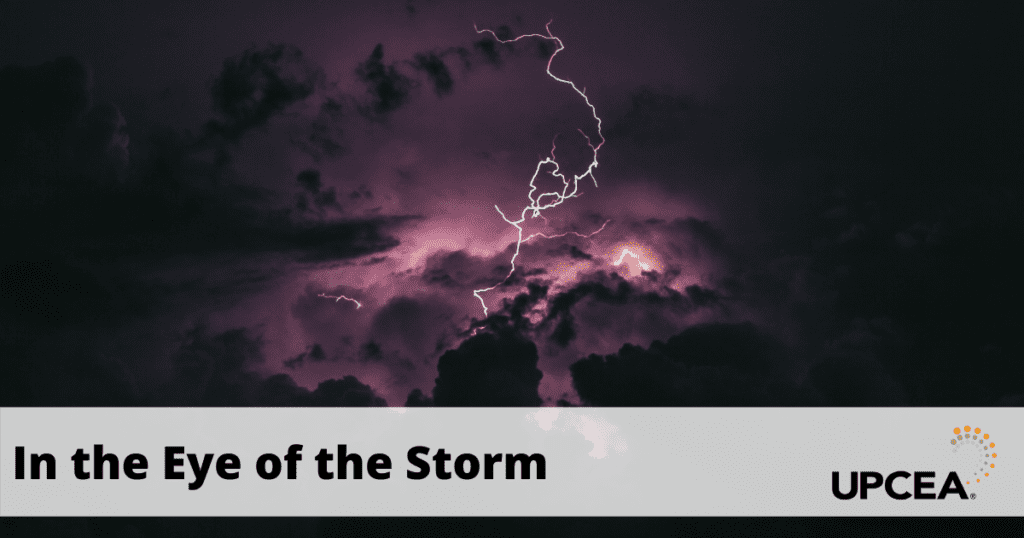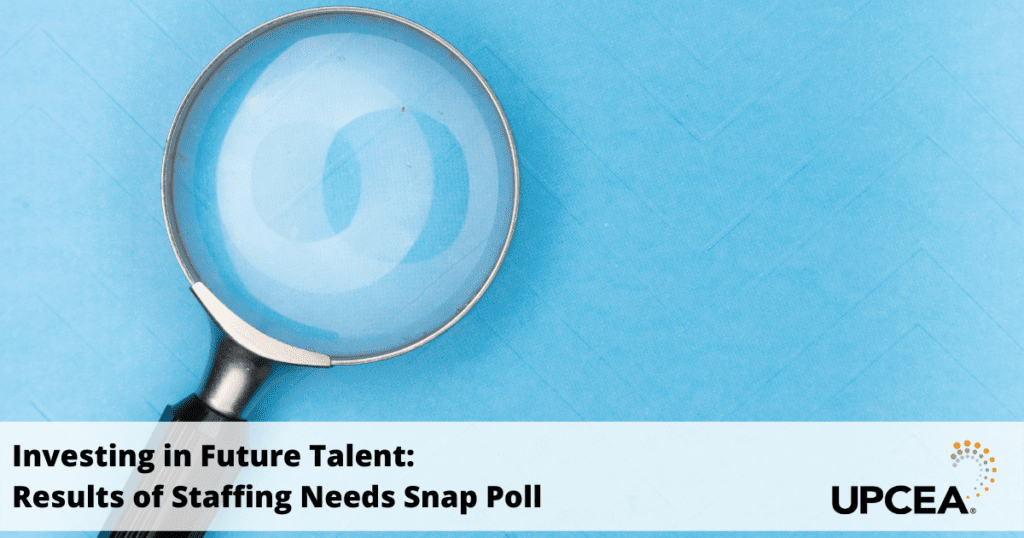Posts by UPCEA
In the Eye of the Storm
A common fact about hurricanes is that the greatest disruption and damage is caused when the storm enters an area and then departs it. A subtle calm is experienced as the eye of the hurricane often pauses over an area to sometimes gain strength. Higher education may be experiencing an eye of the hurricane scenario.…
Read MoreNo Return to ‘Normal’
The placid ivy-covered walls and calm quad will remain when COVID is vanquished, but the university will never be the same. We are forever changed — by the disease and by the advance of technology and competition in this, the fourth industrial revolution. It has been said that you could walk into a classroom at…
Read MoreUPCEA Announces 2021 Regional Award Recipients
17 Individuals and 21 Programs Honored Across 5 Regions WASHINGTON, September 29, 2021 – UPCEA, the leader in professional, continuing, and online education, has announced the recipients of the 2021 Regional Awards. Each of UPCEA’s five Regions recognizes both individual and institutional achievement of the UPCEA members within the Region. Award recipients will be honored…
Read MoreUPCEA Launches Alternative Credentials Community to Advance Quality Standards, Policy, Best Practices
Dedicated resources include benchmarking research, peer learnings and networking via new Council for Credential Innovation and Alternative Credentials Network WASHINGTON, DC, UNITED STATES, September 27, 2021 — The University Professional and Continuing Education Association (UPCEA) today launched its Council for Credential Innovation and Alternative Credentials Network, providing dedicated resources to advance quality standards, policy and…
Read MoreData Privacy Regulations Set to Impact Higher Education Marketing and Enrollment
For 25 years, the collection and trading of financial, social, personal, and location data via digital means has been a booming, multi-billion-dollar business. Web cookies and other tracking technologies, such as personal identifiable information (PII), have basically followed digital users almost everywhere they went, and they rarely had much control over what was collected and…
Read MoreUPCEA Seeks Part-Time Data Analyst to Join Center for Research and Strategy Team
UPCEA is currently seeking a part-time Data Analyst for a fully remote position with our Center for Research and Strategy team. The Data Analyst is responsible for collecting, analyzing, and transforming data into actionable insights on various projects for UPCEA. Role responsibilities include identifying, gathering, and analyzing data to produce understandable and insightful figures and…
Read MoreThree Ways to Improve Communication and Increase Student Engagement
It’s no secret that COVID-19 disrupted higher education. Overnight, students and instructors shifted from traditional, face-to-face instruction to a fully-virtual model. Student retention was already top-of-mind for college and university administrators. But this sudden shift made the challenge of keeping students engaged even more difficult. A return to traditional, in-person learning is imminent. But…
Read MoreIn Memoriam: Karen Swan
Long-time UPCEA member and colleague Karen Swan passed away in early September 2021. Dr. Swan served as professor of education at the University of Illinois at Springfield’s Center for Online Learning, Research and Service. Previously, she served as research professor at Kent State University’s Research Center for Educational Technology. Dr. Swan completed her doctorate in…
Read MoreInvesting in Future Talent: Results of Staffing Needs Snap Poll
With society adapting to a second year of the pandemic, institutions of higher education struggle to find a place of strength in a quickly transforming economy. For obvious reasons, many colleges and universities are banking on a full recovery of demand for undergraduate and graduate degrees and the robustness of the campus experience. Those that…
Read MoreReflections on trends in student success
While many of our colleagues across the country are in the throes of fall orientation, the first weeks of classes, and maybe even a little bit of college football, those of us on the quarter system have well over a month until our fall courses start. And if I’m being honest, I’m still knee deep…
Read More

